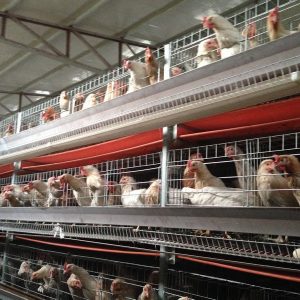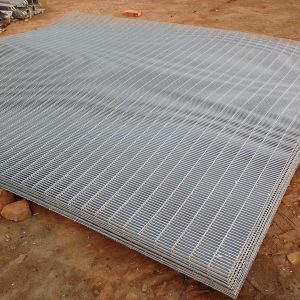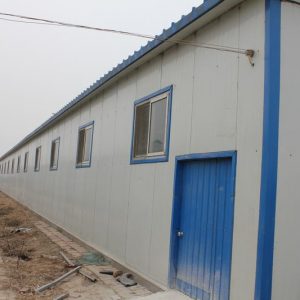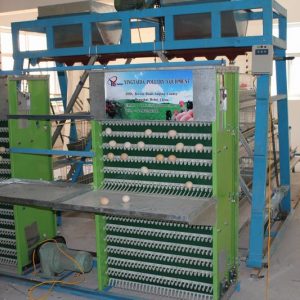
The shortcomings and advantages of fermentation bed technology?
With the seriousness of breeding pollution, the government has vigorously rectified the breeding pollution. In this environment, fermentation bed chicken farming is very popular among chicken farmers, so what are the advantages of using fermentation bed chicken farming? What are the problems in the use of fermentation bed technology?
The advantages of fermented bed chicken
Fermentation bed raising chickens can improve the environmental sanitation of the chicken house. Fermentation bed chicken breeding technology is because there are a large number of beneficial bacteria in the fermentation bed. These bacteria groups form a microbial environment. They use chicken excrement as food, so that chicken manure and chicken urine can be decomposed quickly and timely, and the peculiar smell produced by excrement can be eliminated. , Make the chicken’s growing environment cleaner and sanitary.
Fermentation bed raising chickens can effectively prevent and reduce the outbreak of chicken diseases. The material in the chicken house produces some pathogenic bacteria due to corruption and other reasons, which will cause diseases or epidemics in the chicken breeding process. The principle of the fermentation bed chicken technology is to produce a large number of beneficial bacteria. These beneficial bacteria can inhibit the growth of pathogenic microorganisms. Growth makes chickens less susceptible to diseases such as E. coli and coccidiosis. The fermentation bed also has the feature of maintaining a constant temperature, which has a significant inhibitory effect on the respiratory diseases and ascites symptoms of chickens.
Fermentation bed raising chicken can improve the quality of chicken products. The technology of raising chickens on fermented beds has improved the sanitary conditions of the chicken coops. The healthy growth of chickens under this condition reduces the incidence of chicken diseases and the probability of medication. The drug residues in poultry and egg products are largely reduced. The food that people provide is safer, more reliable, and of higher quality.
Fermentation bed raising chickens can shorten the breeding cycle. Because the incidence of chickens is low, the breeding risk is small, so the economic benefits of farmers are greatly improved.
Analysis of the problems existing in fermentation bed chicken breeding:
1 Disinfection and epidemic prevention
Many people think that after the fermentation bed is completed, normal disinfection cannot be carried out. In fact, this is a misunderstanding. Many chicken farmers have been afraid to use conventional disinfectants to disinfect the fermentation bed for fear of affecting the degradation of microorganisms and causing dead beds. The Animal Health Supervision and Administration Bureau of Daxing District and Beijing Agricultural Vocational College conducted relevant experiments: After disinfecting them with chlorine dioxide and Witter disinfectant, the fermentation bed was 0 cm, -5 cm, and -15 cm. The number of bacteria increases with the time after disinfection, the number of bacteria presents a process of first decline and then rise. The descending process means that the disinfectant acts to kill bacteria, and the ascending process means that as the time after disinfection increases, the effect of the disinfectant decreases and the bacteria begin to recover. The number of bacteria in different sampling layers recovered to more than 70% respectively 48 hours after disinfection, and ordinary disinfection had almost no effect on the number of bacteria in the litter under 30 cm. Theoretically speaking, the fermentation bed itself has the function of biological heat disinfection (therefore, there is a “disinfection bed”). The temperature of the middle layer is about 50 ℃ can kill most pathogenic bacteria and eggs. The surface layer is littered regularly by turning over. Turn into the middle layer for high temperature disinfection, so the surface of the bed generally does not need to be disinfected with chemical agents.
2 Problems with the use of antibiotics and other drugs
This is a misunderstanding. Fermentation bed is just a kind of welfare living environment for chickens. It has not changed the breeding method too much. Normal immune procedures are indispensable and will not affect the fermentation bed. . To raise chickens in a fermented bed environment, antibiotic drugs can be gradually replaced by probiotics; the impact of antibiotic accumulation in feed on litter can be eliminated by adding certain beneficial bacteria to the feed.
3 litter cost issue
According to different regions, the price of various bedding materials varies greatly. The litter of the fermentation bed is not required to be the same. As long as the ratio of water retention and permeability litter is mastered, different regions should fully consider the local regional resource advantages, such as sawdust and corn cobs around Shijiazhuang; Baoding and Hengshui areas Peanut shells; mushroom sticks in Chengde area; cotton stalks in Xingtai and Handan areas; rice husks in Beijing-Tianjin-Tangshan area; crushed branches in mountainous areas, etc. It needs to be specifically pointed out that the corn stalks are prone to Aspergillus flavus in contact with oxygen. If used, when the fermentation tank is 80 cm thick, it can be placed into the bottom of the fermentation bed no more than 30 cm, and do not turn it during daily management. To below 50 cm, ensure the anaerobic fermentation environment of straw. In addition, some fermentation bed bacteria providers have their own production and sales qualifications and channels for bio-organic fertilizer, and can provide litter recycling business.
4Daily management issues
Fermentation bed chicken farming saves time and effort, and saves a lot of labor compared to traditional farming. Although it needs to be turned regularly, it is very labor-saving compared to traditional farming. If you choose to use sawdust for the litter, it is a water-retaining substance and is easy to compact after long-term use , But if you use a reasonable combination of water retention and permeability materials, the fermentation bed can be turned once a week or even two weeks.
5 Service life issue
According to theoretical calculation: ideal use days of litter=[(25- litter carbon-nitrogen ratio)×total litter×nitrogen content rate of litter]÷[(feces and urine carbon-nitrogen ratio-25)×(daily manure production×dung Nitrogen content + daily urine output × urine nitrogen content], in the case of sawdust and rice husk each half, the theoretical service life is 4.06 years, considering the influence of some unpredictable factors, the general fermentation bed is used for 2-3 years Normal. But the service life is affected by many factors. Generally pay attention to the following points to increase the service life of the litter: ①The litter must be completely fermented and decomposed before being used in pigs. This is also a disinfection process for the litter; ②Feed Some microecological additives are added to the bed to supplement bacteria at any time through feces, and to improve the immunity and feed conversion rate of the pig itself; ③Control the breeding density according to the requirements of the fermentation bed to avoid overloading the bed; ④Select qualified strains of the fermentation bed; ⑤Replenish materials in time when the litter sinks more than 10 cm.



